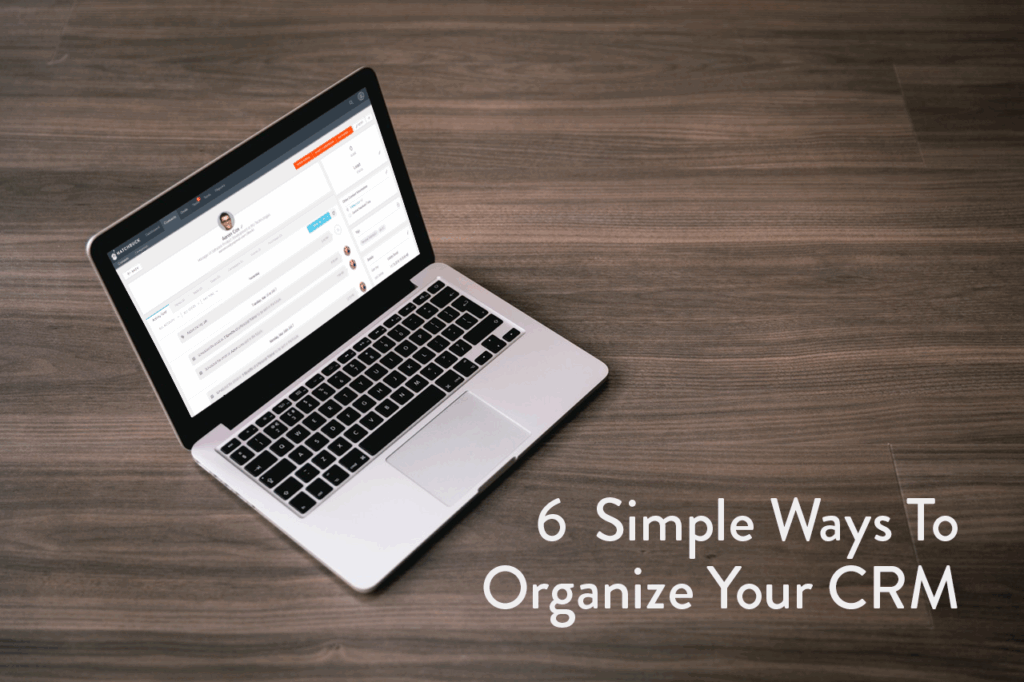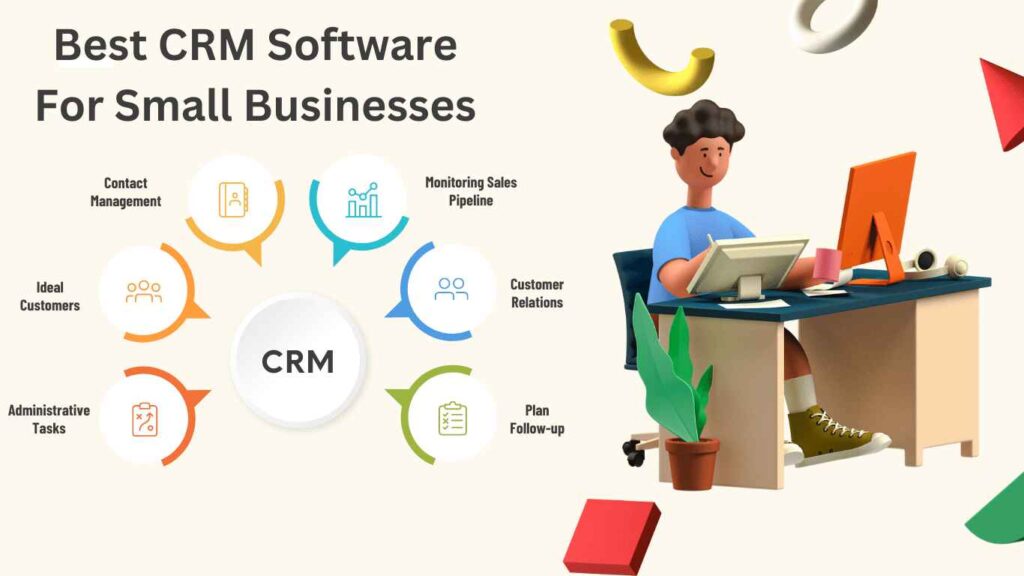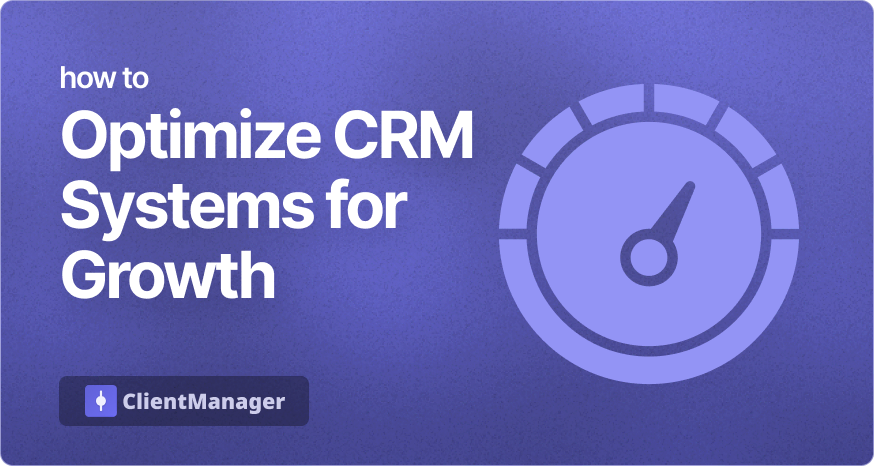
Small Business CRM Tutorial: Your Complete Guide to Customer Relationship Management
Starting a small business is an adventure. You’re juggling everything from product development and marketing to finances and, of course, keeping your customers happy. In the whirlwind of it all, it’s easy for customer relationships to get lost in the shuffle. That’s where a Customer Relationship Management (CRM) system comes in. Think of it as your central hub for all things customer-related.
This comprehensive tutorial will walk you through everything you need to know about CRM for small businesses. We’ll cover what a CRM is, why you need one, how to choose the right system, and how to implement it effectively. By the end, you’ll be equipped with the knowledge to transform your customer interactions and drive business growth.
What is a CRM? Demystifying Customer Relationship Management
CRM, or Customer Relationship Management, is more than just software; it’s a strategy. It’s about understanding your customers, nurturing those relationships, and ultimately, making them loyal advocates for your brand. At its core, a CRM system is a database that stores all your customer interactions, including contact information, communication history, purchase history, and any other relevant data.
Imagine having all this information at your fingertips. You can instantly see a customer’s past purchases, any support tickets they’ve submitted, and even their preferred communication method. This allows you to personalize your interactions, provide better customer service, and anticipate their needs.
Here’s a breakdown of the key components of a CRM:
- Contact Management: Storing and organizing customer information (names, addresses, phone numbers, emails).
- Interaction Tracking: Logging all interactions, such as emails, phone calls, and meetings.
- Sales Automation: Automating sales processes, like lead nurturing and deal tracking.
- Marketing Automation: Automating marketing tasks, like email campaigns and social media management.
- Reporting and Analytics: Providing insights into customer behavior and sales performance.
Why Does Your Small Business Need a CRM? The Benefits Explained
You might be thinking, “My business is small; do I really need a CRM?” The answer is a resounding yes! Even if you’re just starting out, a CRM can provide significant benefits that will help you scale your business and improve customer satisfaction.
Here are some of the key advantages of using a CRM for your small business:
Improved Customer Relationships
A CRM gives you a 360-degree view of your customers. You can see their entire history with your company, allowing you to tailor your interactions and provide more personalized service. This leads to happier customers and increased loyalty.
Increased Sales and Revenue
By automating sales processes and tracking leads, a CRM helps you close more deals and increase revenue. It allows you to identify high-potential leads, nurture them through the sales pipeline, and ultimately convert them into paying customers.
Enhanced Sales Team Productivity
A CRM streamlines sales tasks, such as contact management, lead tracking, and follow-up reminders. This frees up your sales team to focus on what they do best: building relationships and closing deals.
Better Customer Service
With a CRM, your customer service team can quickly access customer information and resolve issues more efficiently. This leads to faster response times, improved customer satisfaction, and fewer frustrated customers.
Improved Data Organization and Accessibility
A CRM centralizes all your customer data in one place, making it easy to access and share information across your team. This eliminates the need for spreadsheets and other inefficient methods of data storage.
Data-Driven Decision Making
CRM systems provide valuable insights into customer behavior and sales performance. This data can be used to make informed decisions about marketing campaigns, product development, and other business strategies.
Choosing the Right CRM for Your Small Business: A Step-by-Step Guide
Now that you understand the benefits of a CRM, the next step is choosing the right system for your business. With so many options available, it can feel overwhelming. But don’t worry; we’ll break it down into manageable steps.
1. Define Your Needs and Goals
Before you start comparing CRM systems, take some time to define your needs and goals. What problems are you trying to solve? What do you want to achieve with a CRM? Consider the following questions:
- What are your primary business goals? (e.g., increase sales, improve customer service, streamline marketing)
- What are your current pain points? (e.g., disorganized customer data, difficulty tracking leads, inefficient sales processes)
- What features are essential? (e.g., contact management, sales automation, marketing automation, reporting)
- How many users will need access to the CRM?
- What is your budget?
Answering these questions will help you narrow down your options and choose a system that aligns with your specific requirements.
2. Research CRM Systems
Once you have a clear understanding of your needs, it’s time to research different CRM systems. There are many options available, ranging from basic, free CRM software to more sophisticated, paid platforms. Here are some popular CRM systems to consider:
- HubSpot CRM: A free, user-friendly CRM with basic features for contact management, sales, and marketing.
- Zoho CRM: A comprehensive CRM with a wide range of features for sales, marketing, and customer service, with various pricing tiers.
- Salesforce Sales Cloud: A powerful CRM with advanced features for large businesses, but can be expensive for small businesses.
- Pipedrive: A sales-focused CRM designed to help sales teams manage deals and track progress.
- Freshsales: A sales CRM with features for lead management, sales automation, and reporting.
- Insightly: A CRM designed for small businesses and agencies, with features for project management and sales.
Read reviews, compare features, and consider the pricing of each system.
3. Consider Key Features
As you research different CRM systems, pay close attention to the features they offer. Consider the following features and determine which ones are essential for your business:
- Contact Management: Ability to store and organize contact information.
- Lead Management: Tools for tracking and nurturing leads.
- Sales Automation: Features for automating sales processes, such as email sequences and task reminders.
- Marketing Automation: Tools for creating and managing marketing campaigns.
- Reporting and Analytics: Features for tracking sales performance and customer behavior.
- Integration with other tools: Ability to integrate with other tools you use, such as email marketing platforms, accounting software, and social media.
- Mobile access: Ability to access the CRM on your mobile devices.
- Customization options: Ability to customize the CRM to fit your specific needs.
4. Evaluate Pricing and Plans
CRM systems come in various pricing plans, from free to enterprise-level. Consider your budget and the features you need when evaluating pricing. Some systems offer free plans with limited features, while others offer paid plans with more advanced functionality. Also, be aware of the pricing structure. Some providers charge per user, per month, while others offer tiered pricing based on the number of contacts or features used.
5. Test Drive with Free Trials or Demos
Before making a final decision, take advantage of free trials or demos offered by CRM providers. This will allow you to test the system and see if it meets your needs. During the trial, try out different features, explore the user interface, and see how easy it is to use.
6. Consider Scalability
Choose a CRM system that can grow with your business. As your business expands, you’ll likely need more features and users. Make sure the CRM you choose can accommodate your future needs.
Implementing Your CRM: A Practical Guide
Choosing the right CRM is only half the battle. The other half is implementing it effectively. This involves data migration, training your team, and integrating the CRM with your existing systems.
1. Data Migration: Importing Your Existing Data
The first step in implementing your CRM is to import your existing customer data. This data may be stored in spreadsheets, email databases, or other systems. Most CRM systems provide tools for importing data from various sources. Before importing your data, clean it up and organize it to ensure accuracy and consistency. Remove any duplicate entries, correct any errors, and format the data in a way that is compatible with your CRM system.
Here’s a basic checklist for data migration:
- Back up your existing data: Create a backup of your current data before you start importing.
- Clean and organize your data: Remove duplicates, correct errors, and format the data.
- Choose the right import method: Use the CRM’s import tool or a third-party data migration service.
- Map your data fields: Match your existing data fields with the corresponding fields in the CRM.
- Test the import: Import a small sample of data to ensure that the process is working correctly.
- Import the full dataset: Once you are satisfied with the test import, import the rest of your data.
- Verify the data: After importing, verify that all the data has been imported correctly.
2. Training Your Team: Getting Everyone on Board
Your CRM is only as effective as the people who use it. Provide comprehensive training to your team to ensure that they understand how to use the system and its features. Training should cover all aspects of the CRM, including data entry, contact management, sales automation, and reporting. Offer different types of training, such as in-person workshops, online tutorials, and user manuals. Also, encourage ongoing learning and provide regular updates on new features and best practices.
Key aspects of team training:
- Identify key users: Determine who will be using the CRM and what their roles are.
- Develop a training plan: Create a training plan that covers all aspects of the CRM.
- Provide hands-on training: Allow users to practice using the CRM and answer their questions.
- Create user manuals and documentation: Provide users with reference materials.
- Offer ongoing support: Provide ongoing support to users to help them use the CRM effectively.
3. Customization and Configuration
Customize your CRM to fit your specific business needs. Most CRM systems offer customization options, such as custom fields, workflows, and reports. Tailor the system to match your sales processes, marketing campaigns, and customer service procedures. This will help you get the most out of your CRM. Customize the system’s fields, workflows, and reports to align with your specific business processes.
4. Integration with Other Tools
Integrate your CRM with other tools you use, such as email marketing platforms, accounting software, and social media. This will streamline your workflows and eliminate the need for manual data entry. Integrating your CRM with other tools will help you automate your processes and improve your efficiency.
Popular integrations include:
- Email marketing platforms: Integrate with platforms like Mailchimp or Constant Contact for automated email campaigns.
- Accounting software: Integrate with platforms like QuickBooks or Xero to track sales and manage finances.
- Social media: Integrate with platforms like Facebook and Twitter to monitor social media activity and engage with customers.
- Website forms: Integrate website forms to automatically capture lead information.
5. Monitor and Optimize: Continuous Improvement
Once your CRM is up and running, it’s important to monitor its performance and make adjustments as needed. Regularly review your data, track key metrics, and identify areas for improvement. Gather feedback from your team and make changes to optimize the system. Continuous improvement is key to maximizing the value of your CRM.
Best Practices for CRM Success
Implementing a CRM is a significant investment. To ensure success, follow these best practices:
- Define clear goals: Set specific, measurable, achievable, relevant, and time-bound (SMART) goals for your CRM implementation.
- Get buy-in from your team: Involve your team in the implementation process and get their input.
- Keep data clean and accurate: Regularly clean and update your data to ensure its accuracy.
- Use the CRM consistently: Encourage your team to use the CRM consistently.
- Provide ongoing training and support: Offer ongoing training and support to your team.
- Analyze your data and make adjustments: Regularly analyze your data and make adjustments to optimize the system.
- Stay updated on new features: Keep up-to-date with the latest features and updates.
Troubleshooting Common CRM Challenges
Even with the best planning, you may encounter some challenges when implementing and using a CRM. Here are some common issues and how to address them:
Data Quality Issues
Inaccurate or incomplete data can undermine the effectiveness of your CRM. To address data quality issues, implement data validation rules, regularly clean and update your data, and train your team on proper data entry procedures.
User Adoption Issues
If your team doesn’t use the CRM consistently, you won’t realize its full benefits. To improve user adoption, provide adequate training, get buy-in from your team, highlight the benefits of using the CRM, and make it easy to use.
Integration Issues
Integrating your CRM with other tools can sometimes be challenging. To address integration issues, choose a CRM that integrates well with the tools you use, and work with the CRM provider or a third-party integration specialist to resolve any technical issues.
Lack of Customization
If your CRM is not customized to your business needs, it may not be as effective as it could be. To address this, take advantage of the customization options offered by your CRM provider, and consider working with a CRM consultant to help you tailor the system to your specific requirements.
The Future of CRM for Small Businesses
The CRM landscape is constantly evolving. Here are some trends to watch:
- Artificial Intelligence (AI): AI is being used to automate tasks, personalize customer interactions, and provide insights into customer behavior.
- Mobile CRM: Mobile CRM apps are becoming increasingly popular, allowing businesses to access their CRM data on the go.
- Social CRM: Social CRM integrates social media data with CRM data to provide a more comprehensive view of customers.
- Personalized Customer Experiences: CRM systems are being used to deliver more personalized customer experiences.
Small businesses that embrace these trends will be well-positioned to thrive in the future.
Conclusion: Embrace CRM for Small Business Success
Implementing a CRM can be a game-changer for your small business. By choosing the right system, implementing it effectively, and following best practices, you can improve customer relationships, increase sales, and drive business growth. Don’t let customer relationships fall by the wayside. Embrace the power of CRM and watch your business flourish. The journey might seem daunting at first, but the rewards – happier customers, increased efficiency, and a thriving business – are well worth the effort.


